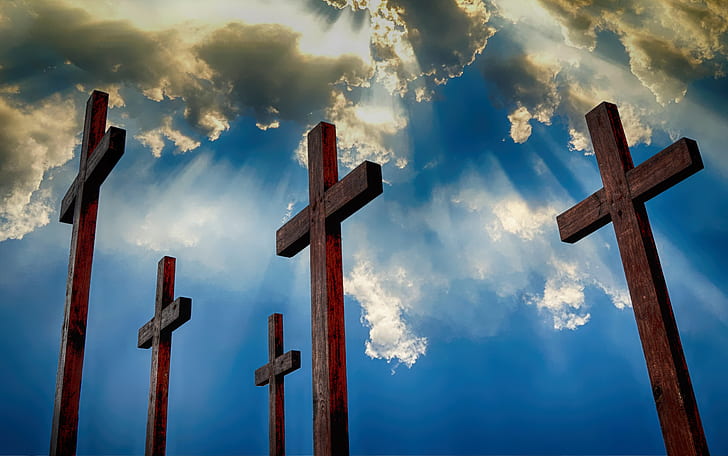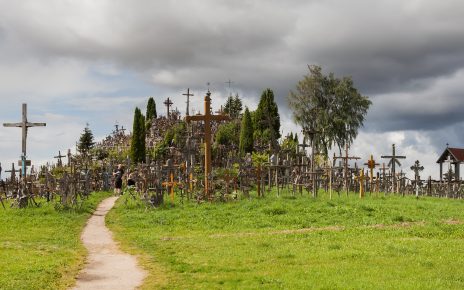Title: A History of Christianity in Bali: A Question of Faith and Culture
Meta Title: Unveiling the Intricate Relationship Between Christianity and Balinese Culture
Meta Description: Discover the journey of Christianity in Bali and its impact on the island’s vibrant cultural landscape. This comprehensive article explores the historical and cultural foundations of Christianity in Bali, highlighting its role in shaping the local community.
Introduction:
Christianity in Bali is a unique blend of faith and culture that has contributed to the island’s rich tapestry. Though Bali is predominantly known for its Balinese Hinduism, Christianity has had a significant presence on the island for centuries. In this article, we embark on a journey to explore the history, impact, and intertwining of Christianity with Balinese culture.
I. The Arrival of Christianity in Bali:
- Early Traces:
- Portuguese Influence: The first recorded instance of Christianity in Bali dates back to the arrival of the Portuguese in the early 16th century.
- Initial Challenges: The dominance of Balinese Hinduism made the spread of Christianity challenging in the early stages.
- Dutch Colonialism:
- Dutch Protestant Missionaries: The 19th century marked the heightened presence of Christianity in Bali due to Dutch colonization.
- The Arrival of Catholicism: Catholicism, in addition to Protestantism, gained traction during this period.
II. The Symbiotic Relationship between Christianity and Balinese Culture:
- Harmony in Diversity:
- Cultural Integration: Christianity in Bali has adapted and assimilated aspects of Balinese culture, establishing a harmonious relationship.
- Festivals and Celebrations: Christian festivals and Balinese traditional celebrations coexist side by side, fostering a sense of unity and cultural diversity.
- Art and Architecture:
- Balinese-Infused Church Architecture: Christian churches in Bali often incorporate Balinese architectural elements, showcasing the fusion of both faiths.
- Traditional Balinese Christian Art: Balinese artists have created a unique form of Christian art that combines traditional Balinese aesthetics with Christian themes.
III. Christian Denominations in Bali:
- Roman Catholicism:
- Major Cathedrals and Churches: Pura Katedral and Santa Maria Immaculata are the prominent Catholic landmarks on the island.
- Role in Balinese Society: Catholics in Bali contribute to the local community through educational and healthcare institutions.
- Protestantism:
- Growing Protestant Presence: The number of Protestant churches and communities in Bali has steadily increased over the years.
- Impact on Local Communities: Protestant churches play an active role in social services, education, and community development.
IV. Challenges and Growth:
- Balinese Perception:
- Acceptance and Understanding: Balinese society embraces religious diversity, fostering an environment where Christianity can flourish.
- Cultural Preservation: The coexistence of Christianity and Balinese Hinduism has enabled Balinese culture to thrive.
- Evangelism and Conversion:
- Local Conversion Practices: Balinese individuals who convert to Christianity often maintain their Balinese identity while practicing their newfound faith.
- Cultural Fusion: Converts have played an active role in combining Christian beliefs with elements of Balinese culture.
Conclusion:
The history of Christianity in Bali is a testament to the island’s tolerance and openness to multiple religious beliefs. The integration of Christianity with Balinese culture has resulted in a unique and vibrant religious landscape. Through centuries of coexistence, Christianity in Bali has not only thrived but also influenced and enriched the local community. It serves as a shining example of the compatibility of faith and cultural diversity.
Whether attending a Balinese Christian celebration or simply admiring the stunning fusion of traditions in Balinese Christian art and architecture, visitors to Bali can witness firsthand the beauty that emerges from the intersection of faith and culture.
Remember to embrace and learn from the rich cultural heritage of Christianity in Bali, as it continues to contribute to the island’s remarkable tapestry of religions and traditions.
A History of Christianity in Bali: A Question of Faith and Culture
Christianity in Bali is a unique blend of faith and culture that has contributed to the island’s rich tapestry. Though Bali is predominantly known for its Balinese Hinduism, Christianity has had a significant presence on the island for centuries. In this article, we embark on a journey to explore the history, impact, and intertwining of Christianity with Balinese culture.
I. The Arrival of Christianity in Bali:
- Early Traces:
- Portuguese Influence: The first recorded instance of Christianity in Bali dates back to the arrival of the Portuguese in the early 16th century.
- Initial Challenges: The dominance of Balinese Hinduism made the spread of Christianity challenging in the early stages.
- Dutch Colonialism:
- Dutch Protestant Missionaries: The 19th century marked the heightened presence of Christianity in Bali due to Dutch colonization.
- The Arrival of Catholicism: Catholicism, in addition to Protestantism, gained traction during this period.
II. The Symbiotic Relationship between Christianity and Balinese Culture:
- Harmony in Diversity:
- Cultural Integration: Christianity in Bali has adapted and assimilated aspects of Balinese culture, establishing a harmonious relationship.
- Festivals and Celebrations: Christian festivals and Balinese traditional celebrations coexist side by side, fostering a sense of unity and cultural diversity.
- Art and Architecture:
- Balinese-Infused Church Architecture: Christian churches in Bali often incorporate Balinese architectural elements, showcasing the fusion of both faiths.
- Traditional Balinese Christian Art: Balinese artists have created a unique form of Christian art that combines traditional Balinese aesthetics with Christian themes.
III. Christian Denominations in Bali:
- Roman Catholicism:
- Major Cathedrals and Churches: Pura Katedral and Santa Maria Immaculata are the prominent Catholic landmarks on the island.
- Role in Balinese Society: Catholics in Bali contribute to the local community through educational and healthcare institutions.
- Protestantism:
- Growing Protestant Presence: The number of Protestant churches and communities in Bali has steadily increased over the years.
- Impact on Local Communities: Protestant churches play an active role in social services, education, and community development.
IV. Challenges and Growth:
- Balinese Perception:
- Acceptance and Understanding: Balinese society embraces religious diversity, fostering an environment where Christianity can flourish.
- Cultural Preservation: The coexistence of Christianity and Balinese Hinduism has enabled Balinese culture to thrive.
- Evangelism and Conversion:
- Local Conversion Practices: Balinese individuals who convert to Christianity often maintain their Balinese identity while practicing their newfound faith.
- Cultural Fusion: Converts have played an active role in combining Christian beliefs with elements of Balinese culture.
Conclusion:
The history of Christianity in Bali is a testament to the island’s tolerance and openness to multiple religious beliefs. The integration of Christianity with Balinese culture has resulted in a unique and vibrant religious landscape. Through centuries of coexistence, Christianity in Bali has not only thrived but also influenced and enriched the local community. It serves as a shining example of the compatibility of faith and cultural diversity.
Whether attending a Balinese Christian celebration or simply admiring the stunning fusion of traditions in Balinese Christian art and architecture, visitors to Bali can witness firsthand the beauty that emerges from the intersection of faith and culture.
Remember to embrace and learn from the rich cultural heritage of Christianity in Bali, as it continues to contribute to the island’s remarkable tapestry of religions and traditions.
A History of Christianity in Bali: A Question of Faith and Culture
Christianity in Bali is a unique blend of faith and culture that has contributed to the island’s rich tapestry. Though Bali is predominantly known for its Balinese Hinduism, Christianity has had a significant presence on the island for centuries. In this article, we embark on a journey to explore the history, impact, and intertwining of Christianity with Balinese culture.
I. The Arrival of Christianity in Bali:
- Early Traces:
- Portuguese Influence: The first recorded instance of Christianity in Bali dates back to the arrival of the Portuguese in the early 16th century.
- Initial Challenges: The dominance of Balinese Hinduism made the spread of Christianity challenging in the early stages.
- Dutch Colonialism:
- Dutch Protestant Missionaries: The 19th century marked the heightened presence of Christianity in Bali due to Dutch colonization.
- The Arrival of Catholicism: Catholicism, in addition to Protestantism, gained traction during this period.
II. The Symbiotic Relationship between Christianity and Balinese Culture:
- Harmony in Diversity:
- Cultural Integration: Christianity in Bali has adapted and assimilated aspects of Balinese culture, establishing a harmonious relationship.
- Festivals and Celebrations: Christian festivals and Balinese traditional celebrations coexist side by side, fostering a sense of unity and cultural diversity.
- Art and Architecture:
- Balinese-Infused Church Architecture: Christian churches in Bali often incorporate Balinese architectural elements, showcasing the fusion of both faiths.
- Traditional Balinese Christian Art: Balinese artists have created a unique form of Christian art that combines traditional Balinese aesthetics with Christian themes.
III. Christian Denominations in Bali:
Christianity in Bali is represented by two major denominations: Roman Catholicism and Protestantism. Let’s take a closer look at each of them:




